This has been a year where reality has clearly merged with the unknown. Our upside down world has been many things: bizarre, enlightening, compassionate, disappointing, empowering, and misleading, to name just a few. One thing is certain, 2020 will be remember as a year of spectacle from top down. This observation mirrors my comic’s reading habits over the past 12 months. From The Sheriff of Babylon to iconic runs of Superman and Wonder Woman to introductions to specific periods of French and Japanese history, there has been a nod to that grey fog-like aura that sometimes can be defined as the “surreal”. There was a revisit to the incredible work of George Pérez produced in the 1980s, a reread of Shigeru Mizuki’s Showa: A History of Japan, comfort found in longtime favorite, Jeff Lemire, and manga became a regular reading staple. Once again, please note that this musing is not a “Best of 2020” list. These are books read at least twice over the past year. Some date back more than three decades while others are artist’s editions that illustrate with precision the process of making these great books. I hope you enjoy.
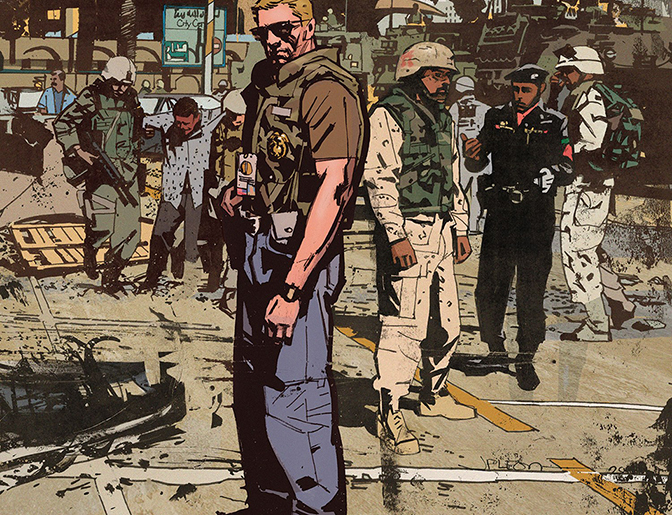
The Sheriff of Babylon
writer: Tom King
artist: Mitch Gerads
Vertigo, DC Comics
2015-2017
link: https://www.dccomics.com/comics/the-sheriff-of-babylon-2015/the-sheriff-of-babylon-1
This unsettling account of America’s occupation of Iraq in the early 2000s is based on King’s experiences while working as a counterintelligence officer for the C.I.A. (Central Intelligence Agency). There’s an unfettered brutality in this depiction. Gerard’s loose drawing style compliments King’s yarn with a proficient use of mark. What make this account real is how the narrative clearly identifies the complexity and ugliness of foreign occupation in the aftermath of war. No one really knows who the good guys are on the ground. The environment feels claustrophobic and constantly shift. The characters are multilayered, human. And, the outcome feels genuine in its reveal. This is something worth reading for anyone interested in a cursory insider’s look at America’s role and the profiteering that occurred in the Middle East over the past two decades. This account may even make you question our leader’s shortsighted motivations.
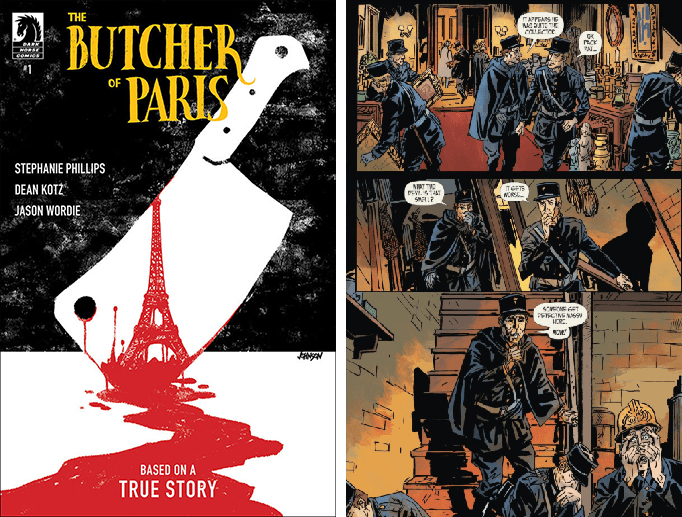
The Butcher of Paris, Dark Horse Comics, 2020
The Butcher of Paris
writer: Stephanie Phillips
artist: Dean Kotz
colorist: Jason Wordie
Dark Horse Comics
2020
link: https://www.darkhorse.com/Comics/3004-771/The-Butcher-of-Paris-1
Using the chaos of the Nazi occupation of Paris in 1944 a serial killer preys upon inhabitants when most vulnerable. Based on the real-life deviant, Marcel Petiot, who exploited the dire situation in the City of Lights during the final years of World War 2. The Butcher of Paris reminds of the epic works by Jacques Tardi through Phillips’ account, Kotz’s linework, and Wordie’s usage of color. Though not on the same scale as the Francophone’s bande dessinée, the pacing and style confirms this notation. I read the works of Tardi while studying at the Alliance Français de Chicago. During that time I became quickly infatuated with anything associated with L’Hexagone. This delightful work reignites this interest and reminds how much, in today’s isolation, I long for travel and to be able to revisit historical places.
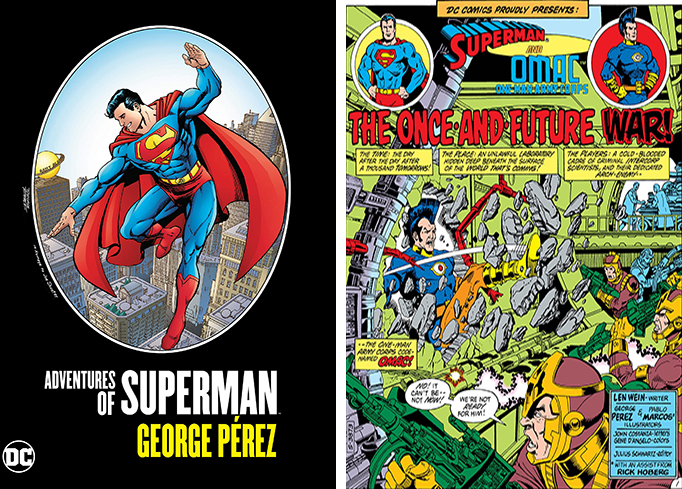
Adventures of Superman
Collects DC Comics Presents #61, Action Comics #643-652 and Annual #2, and Superman #1-6 (2011 series).
Artist: George Pérez
Writers: Len Wein, Jerry Ordway, Roger Stern, and Dan Jurgens
DC Comics
2020 (originally published in 1980s)
link: https://www.dccomics.com/graphic-novels/adventures-of-superman-by-george-perez
There has been a trend to seek out readings that tend to be lighter and land in a more happy place over the past 9 months. One artist and writer, George Pérez, I have tended to gravitate. Collected here is Pérez’s early run on Superman that is heavily aligned with DC continuity and highlights this artist’s adept clean line style. There is revisits with Brainiac, an initial sparring with Maxima, and embracing of the Man of Steel’s Kryptonian heritage. Produced prior to the death of Superman in 1993, this content focuses on building a solid foundation around tightly knit yarns. The stories are amusing, wholesome, and unassuming. These comics read initially back in high school still hold up 40+ years on in this thoughtful collection that confirms Pérez is one America’s quintessential cartoonists of the past 50 years when working with these iconic characters.
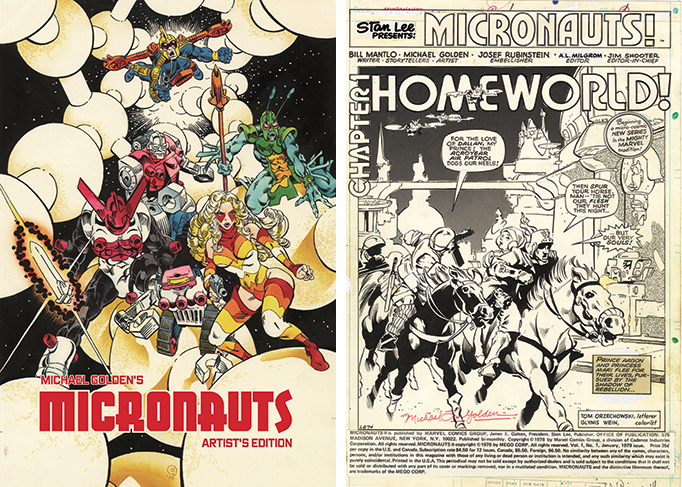
Michael Golden’s Micronauts: They Came From Inner Space Artist’s Edition
(feature six complete issues—Micronauts #3, #7, #8, #9, #11, and #12)
artist: Michael Golden
writer: Bill Mantlo
IDW Publishing
2020 (orginally published late 1970s through 1980s)
link: https://www.idwpublishing.com/product/michael-goldens-micronauts-artists-edition/
Having collected all of IDW’s Artist’s Editions since the release of Dave Stevens’s Rocketeer in 2011, I have found that there is always something remarkable in the selections and production value of these gargantuan tombs. Michael Golden is a master illustrator. He most certainly deserves this type of treatment to his work. The Micronaut’s material is consider some of his best. Edited by Scott Dunbier, and designed by Randall Dahlk, the publisher has organised one of the best books in this series. The indicated 6 comics are scanned (for the most part) and presented at 100% scale along with a gallery section of covers and full colour drawings. What makes this format so cherished is what is revealed in the creative process. One can see the non-photo blue line beneath the inking, the key-lines used to align the printing registration, the whiteout used for corrections, and the hand drawn lettering. This tactile experience goes beyond noting the flaws, it completes the cycle of creativity to be fully experienced from beginning to end.
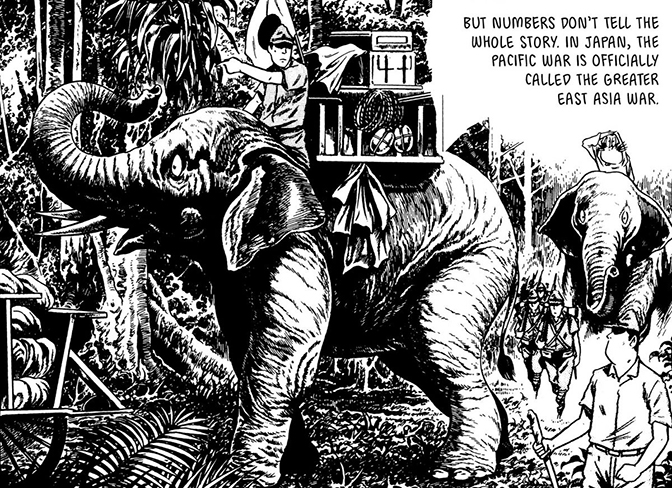
Drawn & Quarterly Publishing, 2013
Showa: A History of Japan 1926-1939, volume 1
artist & writer: Shigeru Mizuki
Drawn & Quarterly Publishing
2013 (originally published 1988-1989)
link: https://drawnandquarterly.com/showa-1926-1939
Shigeru Mizuki’s four volumes, Showa: A History of Japan, are now a standard in the teaching of Japanese history focused upon the Showa period (1926 to 1989) around the world. This initial volume examines Japan during its build up to World War 2, specifically the nefarious activities by militaristic nationalists that supported the conquest of Manchuria. In this fascinating read, Mizuki weaves autobiography with national and international events. There is a light informality in his depiction of his youth and relationship with Nonnonba, a hard drinking substitute for his grandmother. This is best seen in her depiction of yokai and how to curtail Shigeru’s fear of these creatures. Nonnonba informs a young Mizuki to politely allow the Betobeto-san to pass by him, he’ll go away. This simple tactic works. Daily explorations and hardships encountered by the artist are contrasted with the deceptive activities of the Japanese army. There is a sardonic tone in voice that quickly reveals there is no way to deter the rise of expansionism and domestic suppression of communists, liberals and anyone else who doubted government policy. Mizuki lived an incredible life. This is clear in voice and his contributions to the medium. He is not just an iconic artist, he was a great human being. His story is a fresh reminder of how one can maintain a positive stance in even the most challenging times.
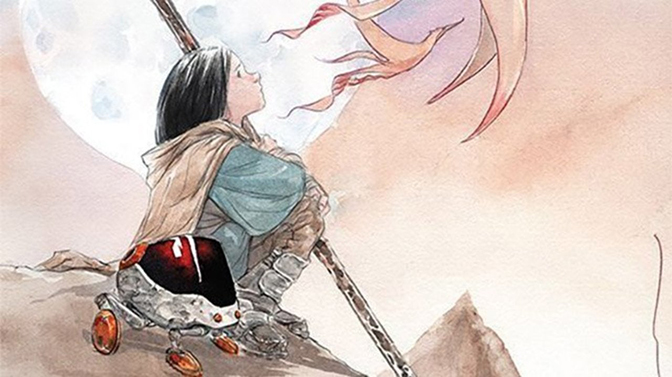
Image Comics, 2019
Ascender 1: The Haunted Galaxy
artist: Dustin Nguyen
writer: Jeff Lemire
Image Comics
2019-2020
link: https://imagecomics.com/comics/releases/ascender-vol-1-the-haunted-galaxy-tp
In this follow-up to this new sci-fi classic Nguyen and Lemire have not missed a beat. It has been 10 years since the activities that concluded Descender. Mila, daughter of Andy and Effie, attempt to maintain a low profile on planet Sampson while exploring and attempting to conceal themselves from Mother, the vampire witch. Their day to day life appears fairly stable. However, Mila is a rambunctious child, like her parents, and has connected with a robot who is an old pal of her fathers. This introduction sets into motion an arc full of missteps setting up a wild ride for all. Nguyen’s water colour styled illustrations are sumptuous. His application and method is certainly unique. The delicate form and line-work compliments Lemire’s verse with fluidity. This style feels to be a level of poetics aligned with youth. Though somewhat complex, the story is simple enough and worth sharing with younger audiences. This will certainly be a book read again in 2021 upon assembly of materials into a hardcover format.
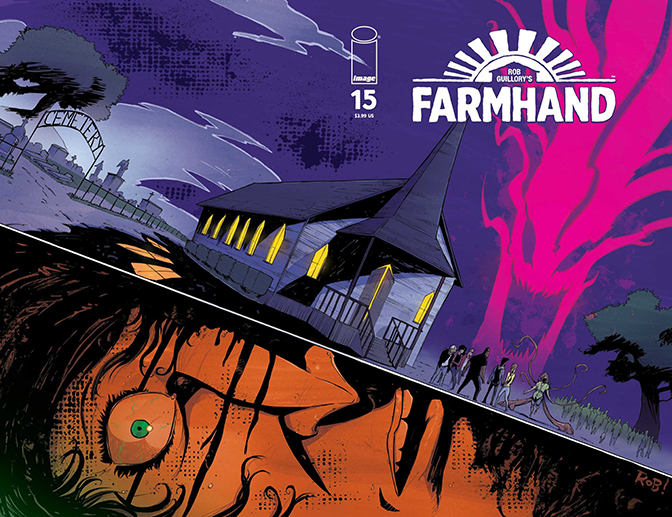
Farmhand
artist & writer: Rob Guillory
Image Comics
2018-2020
link: https://www.robguillory.com/
I really wish I was as adept, clever, and charming in linework and developing a yarn as Rob Guillory. His run on Chew with writer John Layman remains one of my most passed on dark comedies of the past decade. When shared with others, I always receive inquiry to where to locate similarly creepy, unusual, and jocular materials. In this solo effort, you are introduced to Jedidiah Jenkins, a farmer, who mysteriously obtains the knowledge for seeds to sow human parts. Trees grow limbs. Noses and ears sprout from bushes. Organs are cultivated like potatoes from the earth. Humans have treated the planet poorly. Nature has now evolved to survive. This title follows suit in Guillory’s past efforts. There’s a whole mess of espionage, intrigue, and weirdness. Guillory’s message is an interesting take on our present. The dark wit is an entry point to a deeper take. This is why I find his work compelling. This is something, if not read, that you should add to your list for the new year.
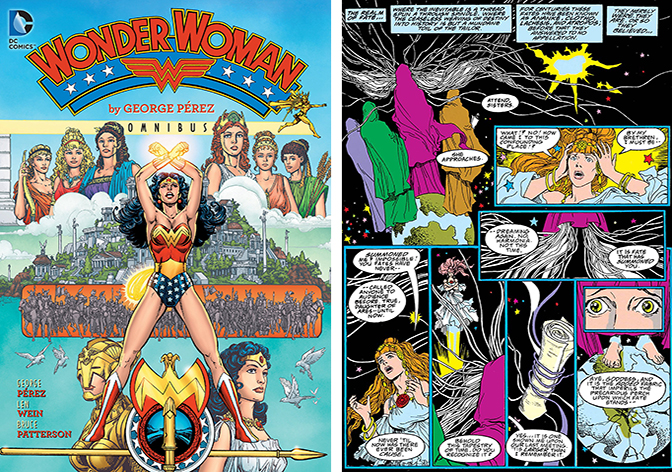
Wonder Woman Omnibus, Volume 1
(includes Wonder Woman #1-24 and Wonder Woman Annual #1″)
artist & writer: George Pérez
DC Comics
2015 (orginally published 1980s)
link: https://www.dccomics.com/graphic-novels/wonder-woman-by-george-perez-omnibus-2015/wonder-woman-by-george-perez-omnibus-vol-1
Another read by George Pérez was his reimagining of Wonder Woman in 1987. I read bits and pieces of the run during my 1st year in college. At the time, I would run up to Cason Square to grab whatever was available on the spinner racks after scrapping together enough change. Collected here are issues 1-24 and the annual. This omnibus sat on a stack for the better part of 5 years…and I finally began reading back this February, then in May, then in July, all the way through this writing. I believe George Pérez fell in love with the Amazon Princess while plotting out and drawing this run. Though Len Wein contributed to this amazing material, Pérez’s obsession can be deeply felt. The drawings are as good as anything produced before and after by the artist. The 2nd half is a bit more loose. This is most likely due to the taxation of working as both artist and writer under tight deadlines. Nevertheless, with the recent interest in Wonder Woman, this has been an ideal time to finally read and reread Perez’s efforts fully.
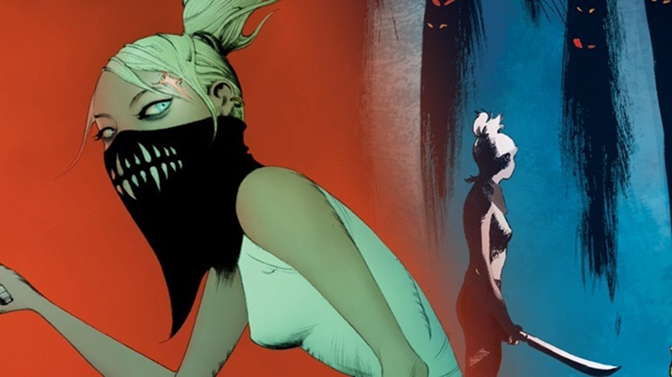
Vol. 1, Boom! Studio, 2020
Something is Killing the Children
writer: James Tynion IV
artist: Werther Dell’Edera
Boom! Studios
2020
link: https://www.boom-studios.com/wordpress/series/something-killing-children/
Known widely for his work on DC superheroe titles (Batman, Justice League), James Tynion IV stretches the comfort zone through this dark subversive read. Kids are generally off limits, they are expected to survive and propel the protagonist. Here, no one in Archer’s Peak is off limits, especially children. This is a timely smart work. The setting lacks hope in the face of tragedy. The grown ups are mostly clueless, sound familiar? There’s a mystery stranger, Erica Slaughter, ala Buffy The Vampire Slayer. She may be the best hope, but it is clear that not everyone will make it through. Comparisons can be drawn with Netflix’s Stranger Things and the German sci-fi thriller Dark. Though not excessive, there’s a rough brutal quality to the linework of Werther Dell’Edera. The art style only propels the narrative. The buildup is slow and methodical. There remains more unknown than defined which signals this horror title will be framed nicely into 2021.
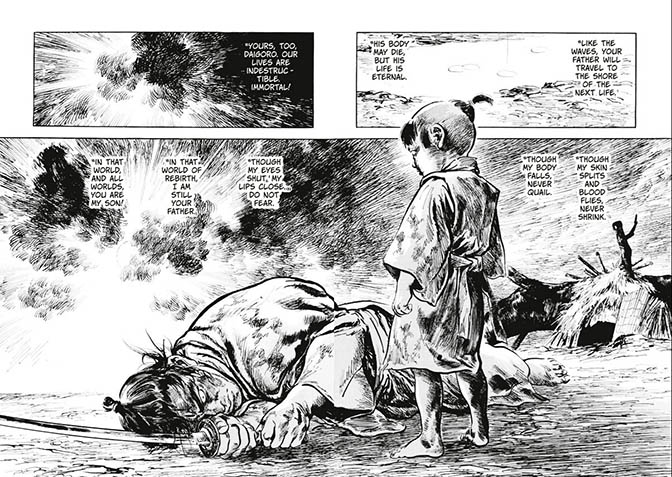
Dark Horse Manga, 2013
Lone Wolf & Cub, volume 1
writer: Kazuo Koike
artist: Goseki Kojima
Dark Horse Manga
2013 (originally published 2000)
link: https://digital.darkhorse.com/series/28/lone-wolf-and-cub
I came late to this the epic saga Lone Wolf & Cub. Due to my age, the lack of availability, and uniformed knowledge of manga, I did not initially read the works of Kazuo Koike and Hoseki Kojima until this past spring. It is clear I was missing out. Originally serialised in Japan’s Weekly Manga Action between 1970 and 1976, Dark Horse publishing organised the 28 books into 12 massive volumes between 2013 and 2016. The story chronicles Ogami Ittō, the shōgun’s executioner who uses a dōtanuki sword during the feudal period of Japan. Disgraced by false accusations by the Yagyū clan, Ogami is forced to work as an assassin while caring for his 3-year old son Daigorō. Koike’s verse invokes the classical tropes many have come to associate with this place and time through the films of Akira Kurosawa. Kojima’s layouts and drawings are adeptly simplified with dynamism. This is one those books for anyone who holds any interest in understanding the manga artform and Japanese culture we have come to admire.
Writing by Chester Alamo-Costello


